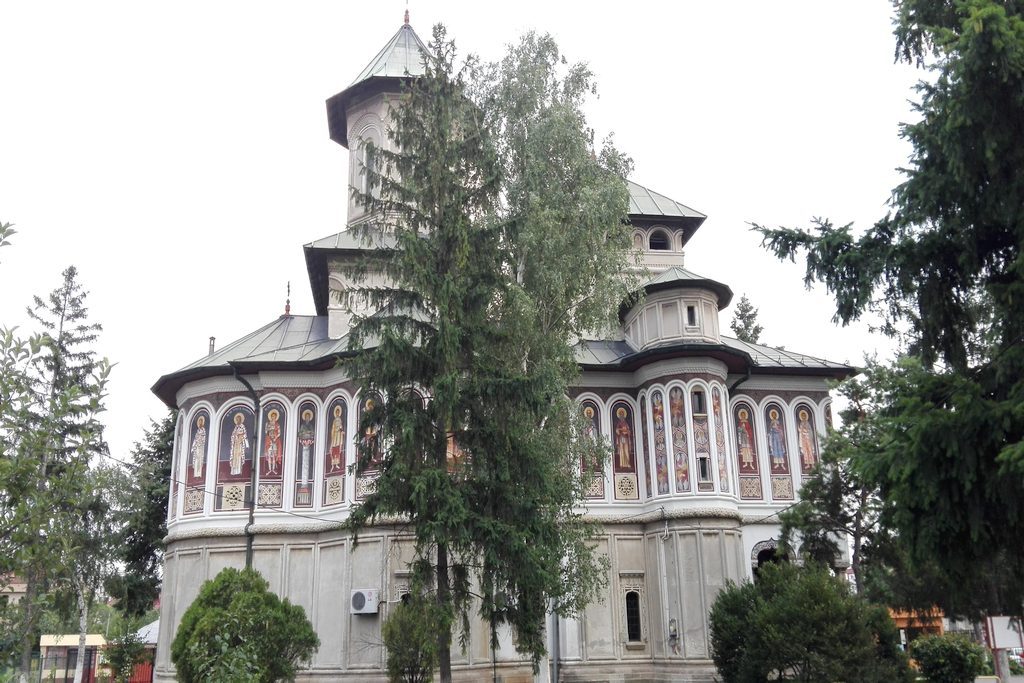

On the north-east side of Craiova, on Păltiniş Street, stands tall for over 300 years, the Saint Gheorghe Cel Nou Church. It is part of the pleiad of the churches built in brick mid 18th century, being built by the Stoieneştilor landowner family. According to the testimonies kept in the church inscription we find that, in 1722, landowner Milcu Stoienescu, helped by his brother, Gheorghiţă, built a wooden church on this spot. Between 1754 and 1755, during Constantin Mihai Racoviţă’s reign, the Stoieneştilor landowner family built, instead of the wooden church, a beautiful wall church. It was a time of great architectural transformation for the churches in the Băniei citadel, because replacing the old wooden churches with others, built in wall, came as a response to the Roman Catholic influences imposed by the Austrian domination, a real material and spiritual rebirth period.
The wall church was built by the first founder’s son Milcu Stoenescu, who had become high merchant in Craiova. With the built his wife, Ilinca stood by him and nephew, Hagi Constantin Stoenescu, also top merchant, becoming then the head of the merchants in Craiova. The inscription clearly shows the role of the Stoenescu family in the construction and care of the „Saint Gheorghe“Church. The church was sanctified in 1776, after 21 years since its foundation. It was decorate with two polygonal steeples, open verandah, in traditional brâncovenesc style. Thanks to the dowry it possessed, the „Saint Gheorghe“Church was raised to a monastrary status, also noted by Dionisie Fotino in „Istoria Daciei“.
In the diggings done for the pavement and plumbing, many relics were found in the church courtyard. It seems that, on the spot where The Saint Gheorghe Cel Nou Church is today, there was an old cemetery, used by the founders as necropolis. Here was also where the funeral plaques of the Stroenescu family members were found, which were later placed high up in the church narthex. Over time, the church went through many storms, but martyr Gheorghe protected his place of honoring every time. In 1801, the Stroenescu family was attached by barbarians from south of the Danube, who tried to burn it down, but rain out of the blue put out the flames and the church remained untouched. After the 1838 earthquake, the two steeples fell and the altar was cracked in three places. Only after 10 years, in 1848, the steeples and bell tower were redone in wood and the altar restored.
Due to its advanced state of degradation, the church in Păltiniş was shut down to the public for almost 30 years. From 1913 the restoration works began again with architect Petre Antonescu. As such, the steeple was conceived with a square base, the bell tower was raised similar to the Oltenia fortresses; the verandah was reopen with new rock columns copied from the old ones, with outside paintings in the upper level and the iconostasis was inspired by that of the Hurezi Monastery. The outside painting was done by Costin Petrescu: the dedicated icon and the niches representing the apostles and the prophets. In 1918, after a visit that the master portraitist Eustaţie Stoenescu made in Craiova at the king’s invitation, also saw his family’s foundation and disliking the exterior fresco, stopped the works and decided to paint the church himself.
